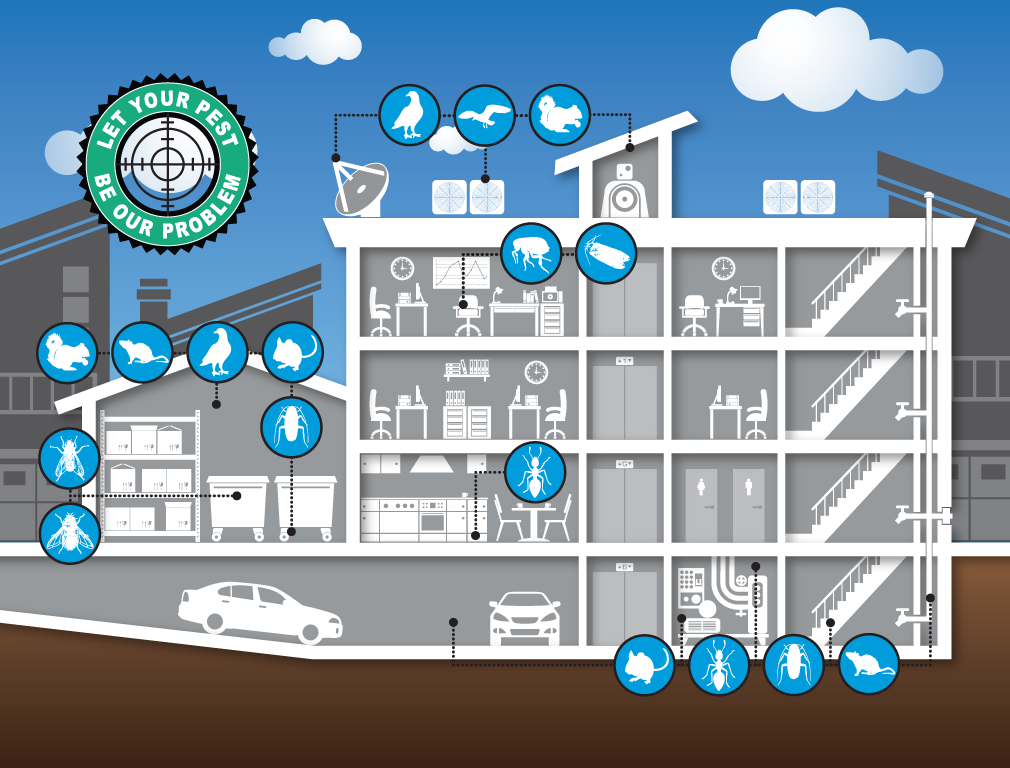Rodent-Proofing Your Attic: Necessary Tips For Homeowners
Rodent-Proofing Your Attic: Necessary Tips For Homeowners
Blog Article
Short Article Created By-Austin Hutchinson
Visualize your attic as a cozy Airbnb for rodents, with insulation as cosy as resort pillows and electrical wiring more enticing than area solution. Currently, think of these undesirable visitors throwing a wild party in your home while you're away. As a homeowner, guaranteeing your attic is rodent-proof is not just about assurance; it has to do with securing your home and liked ones. So, what simple steps can you require to guard your shelter from these fuzzy burglars?
Examine for Access Information
To start rodent-proofing your attic room, check for entrance factors. Begin by thoroughly analyzing the exterior of your home, trying to find any kind of openings that rodents can use to access to your attic. Look for voids around utility lines, vents, and pipes, along with any type of fractures or holes in the foundation or house siding. Make certain to pay close attention to areas where various structure materials fulfill, as these prevail entry factors for rats.
In addition, check the roofing system for any type of damaged or missing out on shingles, as well as any voids around the sides where rats might press through. Inside the attic room, look for indicators of existing rodent task such as droppings, ate cords, or nesting materials. Make use of a flashlight to thoroughly check dark edges and covert rooms.
Seal Cracks and Gaps
Evaluate your attic room completely for any fractures and voids that need to be sealed to avoid rodents from going into. Rodents can press via even the smallest openings, so it's crucial to seal any kind of possible entry factors. Inspect around pipelines, vents, wires, and where the walls satisfy the roof covering. Utilize a combination of steel wool and caulking to seal off these openings efficiently. Steel wool is a superb deterrent as rats can not eat through it. Ensure that all spaces are snugly sealed to refute access to unwanted bugs.
https://bouldercounty.gov/safety/animals/ ignore the importance of securing voids around windows and doors too. Usage climate removing or door moves to secure these areas efficiently. Check the locations where energy lines get in the attic and secure them off using an ideal sealer. By taking the time to seal all fractures and spaces in your attic room, you create an obstacle that rodents will certainly locate tough to violation. Prevention is key in rodent-proofing your attic, so be thorough in your efforts to seal any kind of prospective entry points.
Eliminate Food Resources
Take proactive measures to eliminate or store all prospective food sources in your attic to discourage rodents from infesting the area. Rodents are drawn in to food, so eliminating their food resources is critical in maintaining them out of your attic.
Here's what hornet nest removal can do:
1. ** Shop food firmly **: Prevent leaving any type of food things in the attic. Shop all food in impermeable containers constructed from steel or sturdy plastic to avoid rats from accessing them.
2. ** Clean up particles **: Remove any kind of heaps of particles, such as old papers, cardboard boxes, or wood scraps, that rats might use as nesting material or food resources. Maintain the attic clutter-free to make it much less enticing to rodents.
3. ** Dispose of rubbish appropriately **: If you utilize your attic for storage and have garbage or waste up there, ensure to dispose of it routinely and properly. Decaying pest removal can draw in rats, so keep the attic tidy and free of any type of organic waste.
Final thought
To conclude, remember that an ounce of prevention deserves a pound of remedy when it comes to rodent-proofing your attic.
By putting in the time to inspect for entrance points, seal fractures and voids, and get rid of food sources, you can keep unwanted insects away.
japanese beetle killer in mind, 'An ounce of prevention is worth an extra pound of remedy' - Benjamin Franklin.
Stay positive and shield your home from rodent infestations.
